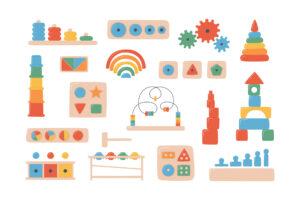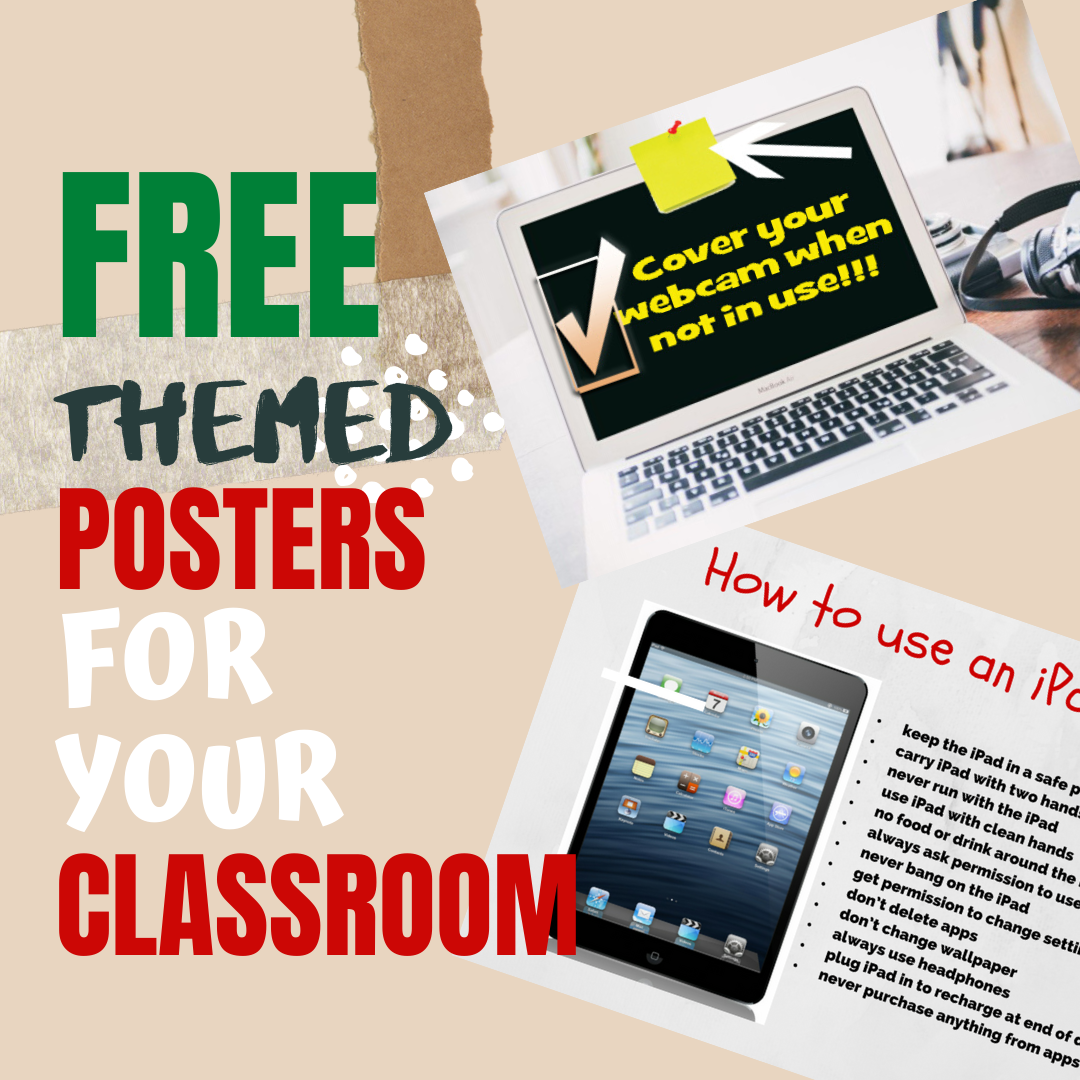Blending Montessori and Technology: Finding the Right Balance in Early Childhood Education
These days, it seems that all toddlers master how to swipe across a screen before they learn to tie their shoes. Technology is everywhere and is not leaving anytime soon. For parents and educators who follow or are interested in the Montessori approach, which emphasizes hands-on activity, self directed learning, and natural curiosity, this article will come in handy. Can the Montessori ideology and technology coexist? Is it possible for children to continue using tablets, phones, etc. without losing that tangible, earthy learning process?
The quick answer is yes. But it takes thoughtfulness, balance, and a profound grasp of why Montessori works in the first place.
What Montessori Is Really About
First and foremost, we must understand a bit more about the Montessori approach and where its heart is. Dr. Maria Montessori’s belief was in child-directed learning. Rather than being told what to learn and how to do it, children find out about their world through materials that are fashioned to meet their needs at various levels of development.
Montessori materials, most commonly known as Montessori toys, are hands-on tools used in many Montessori classrooms. These tools are not noisy or flashy, most of the time these are materials made of wood. They’re meant to help develop fine motor skills, improve concentration, problem solving skills, and help a child be self sufficient. While these materials can be entertaining, that is more of a bonus than their main purpose. For example a knobbed cylinder or a bead chain, each material has a unique function that guides a child to master a skill through repetition and exploration.
Technology should compliment and never replace these moments of learning.
Where Technology Belongs
Technology is not the enemy. It comes down to what we do with it. When used properly, it can actually reinforce Montessori goals, especially when aimed at creativity, problem-solving, and engaged activity rather than passive screen time. For example, there are storytelling apps that let kids create their own digital books. There are simple coding games that teach sequencing and logic in a way that mirrors Montessori’s step-by-step learning approach. Furthermore, there are educational videos out there that can help children of many ages, visualize abstract ideas, like how honey is made or videos that help them visualize how life is under the sea.
Nevertheless, just like everything else, there has to be some type of balance. Children under six learn best with their hands and bodies. Tracing sandpaper letters with their fingertips is much different than seeing letters on the screen. Technology can’t replace the full, sensory experiences that enable little kids to create neural pathways.
5 Practical Ways to Combine the Two
- Technology should enhance learning, not replace the foundational experiences that support real education. If a child is learning about animals, they start by playing with toy models of animals, matching them to cards and reading books on them. They then watch a short, age-appropriate video with those animals in their ecosystems. The video does not replace the initial learning, it enriches it. This is a good example on how Technology is applied as a tool for sparking curiosity, rather than avoiding it.
- Be judicious when it comes to digital tools. Not all apps are created equally. In fact, many are created more with the goal of creating dopamine spikes than true learning. When choosing technology for little ones, pick tools that are open ended, calming, and foster imagination.
Some good starters include:
- Drawing apps mimicking crayons or pencils
- Puzzle or logic games without background noise or timers
- Audio stories to practice listening and language
If it encourages creativity, decision-making, or discovery, it’s a good option. If it only keeps a child glued to the screen, it’s not.
- Have boundaries, but give children a choice. Montessori learning is independence. That doesn’t mean that it must stop once screens enter the scene. Rather than dictating what a child can or cannot do, offer them a few approved choices and let them make them.
You may also encourage them to document themselves learning. Maybe they take a photo of a tower they built or record for a minute talking about their favorite book. Children can be made to think, develop language abilities, and be proud of what they accomplished through small things.
- Set a specific screen time. The most terrible thing about technology is that it has the potential to push real learning behaviors like playing, building, pretending, and creating to the sidelines. That is why it is so important to have firm boundaries around screen time. Attempt to restrict screen time to a specific, intentional part of the day. Use a timer if you must, or designate a technology free play space. Model good behavior by putting your own phone away during meals or play. Kids learn by seeing our actions after all.
- Use technology to support real life learning. Let’s say you’re making bread with your child. Before you start, you pull out a short video on how you produce flour. Or maybe your child is into gardening, so you look up what worms do in the ground. That’s great utilization of technology, it supports learning in the real world. Even at recess, technology can play a minimal part. Maybe you record bird calls during a hike and look them up later. Maybe your child takes photos of plants and creates a nature journal. These are things that involve technology to supplement, not replace, sensory learning.
What About Teachers?
Technology also serves the adults who are providing the instruction. Nowadays, teachers can use technology to share grades with parents, organize their lesson plans through apps and track a child’s progress. Electronic portfolios, for instance, allow teachers to track progress and inform parents of milestones. These technologies save time and allow teachers to work more time with the children, not doing paperwork, when leveraged effectively. Planning tools can also help streamline lessons, organize materials, and gather resources that support the Montessori method. The key is using tech behind the scenes to support, not disrupt, the classroom flow.
But Let’s Be Honest: There Are Challenges
The first worry is overstimulation. Dizzying graphics, loud noises, and incessant rewards can lead to attention deficits or emotional dysregulation. That’s why it’s so important to preview apps yourself and avoid those that are more cartoon than educational.
Access is the other issue. Not every home or classroom is equally equipped. No problem. The goal isn’t to have the most costly equipment, but to have the best tools that will help your child learn.
Lastly, technology should never replace human conversations, interactions, etc. No application, no matter how brilliant it is, can do what a teacher or parent can offer when it comes to attention, encouragement, eye contact, and offering affection.
Wrapping It All Up
Montessori and technology can certainly exist side by side. It just needs to be done with great sensitivity. Instead of considering them opposites, consider them as allies. One gives the structure and sensory foundation that children need. The other, when harnessed effectively, is able to provide new worlds and depth in understanding.
The point isn’t to turn Montessori into a tech lab. It’s to reach a point where we can use technology that supplements a child’s learning without losing what we’ve found works best. When used cautiously, technology can even support the very things Montessori education is all about, which is to create children who are curious, creative, and confident in their independence.
It’s not about every day being perfectly balanced. Some days will skew a bit more towards the traditional. There will be some days with a little more screen time. What matters is that we help children thrive, with both feet grounded and eyes wide open to all the possibilities ahead.
–Image credit Pexels (Alphabet-Trains-by pexels-karolina-grabowska-7296764.jpg)
Here’s the sign-up link if the image above doesn’t work:
https://forms.aweber.com/form/07/1910174607.htm
“The content presented in this blog are the result of creative imagination and not intended for use, reproduction, or incorporation into any artificial intelligence training or machine learning systems without prior written consent from the author.”
Jacqui Murray has been teaching K-18 technology for 30 years. She is the editor/author of over a hundred tech ed resources including a K-12 technology curriculum, K-8 keyboard curriculum, K-8 Digital Citizenship curriculum. She is an adjunct professor in tech ed, Master Teacher, freelance journalist on tech ed topics, and author of the tech thrillers, To Hunt a Sub and Twenty-four Days. You can find her resources at Structured Learning.









































